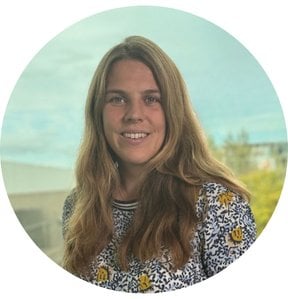Dr. Annelies Voordendag
ETH Zurich, Institute of Geodesy and Photogrammetry
Revolutionizing Glacier Monitoring: Capturing 3D Movement with Advanced Laser Scanning
Research Focus:
Glaciers are distinguished as an Essential Climate Variable (ECV) and accurate information about them contributes to the characterization of Earth’s climate. Accurately measuring how glaciers mass balance is essential, but current methods – the traditional glaciological approach (in situ measurement such as snow accumulation and ice ablation) and the geodetic method (using glacier volume change by comparing surface elevation models from different time points) – often yield different results, and have different spatial and temporal resolutions.
The aim of Dr. Annelies Voordendag’s project is to connect the glaciological method to the geodetic method by designing a mass balance stake, as employed in the glaciological method, that can be measured with geodetic methods.
In a preliminary project, she designed innovative "ice lollipops" – mass balance stakes equipped with reflective spheres – that can be accurately measured using geodetic techniques. These custom-designed targets are drilled directly into the glacier and tracked by a permanent, automated long-range terrestrial laser scanning (TLS) system. This technology allows for monitoring of glacier movement, capturing both vertical and horizontal motion, as well as surface melt. Initial findings from her work at the Hintereisferner glacier in the Austrian Alps have already revealed surprising insights. To gain deeper insight into the glacier's unexpected behaviour, Dr. Voordendag plans to expand her system into a distributed network of ice lollipops, incorporating prisms to improve TLS data registration and sphere center estimation. As this has never been done, it needs to be tested whether the ice lollipop remains detectable under extreme environmental conditions, including harsh weather, snow riming, and strong winds.
By integrating her expertise in long-range laser scanning, geodesy, and glaciology, Dr. Voordendag's project promises not only to enhance the accuracy and spatiotemporal resolution of glacier monitoring but also provides a framework for long-term, automated mass balance observations that reduce dependency on field visits.
Background:
Dr. Annelies Voordendag's academic journey began at the University of Technology Delft, where she earned her Bachelor of Science in Applied Earth Sciences. She continued her studies there, completing a Master of Science in Applied Earth Sciences with a focus on Geoscience and Remote Sensing. She also obtained a Master of Science in Science Education and Communication from the same university.
She completed her doctoral studies in Atmospheric Sciences at the University of Innsbruck, Austria, with a thesis focusing on investigating glacier mass balance and snow redistribution using advanced laser scanning data. Since October 2023, Dr. Voordendag has been a postdoctoral researcher at ETH Zürich.
Dr. Voordendag's dedication and significant contributions to her field have been recognized with several grants. Among others, she was honored in 2024 with the CCCA Nachwuchspreis for her paper on the Glacier Loss Day (2023).
Dr. Voordendag is a passionate advocate for science communication and education. She has also been actively involved in Girls* on Ice Austria since 2020. This program inspires young women’s curiosity in science by combining scientific exploration, artistic expression, and mountaineering in a glaciated alpine environment and breaks gender stereotypes.
